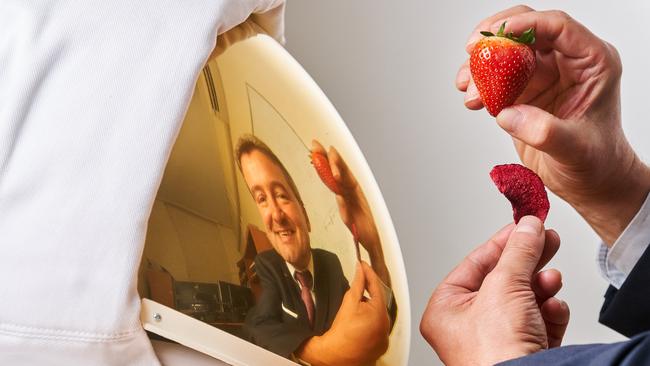University of Adelaide scientists improving space food quality and taste
If you hate airline food, spare a thought for astronauts. Freeze dried, then rehydrated, grey and lifeless meals make long missions even harder to bear. But Adelaide scientists think they have the answers.
SA News
Don't miss out on the headlines from SA News. Followed categories will be added to My News.
Astronauts need tasty, nutritious food, especially for longer missions, so Adelaide scientists are experimenting with better ways to prepare, store and reactivate in-flight meals.
Adelaide University chemical engineer Professor Volker Hessel is preparing to send samples to the International Space Station in September.
The food will then stay a year on board before returning to Earth, where scientists will assess its long-term stability using an electronic “nose” and “tongue”.
“Food is crucial for space exploration and human colonisation of space,” Prof Hessel said. “It has to do with nutrition content, so you get what you need, but also has to do with the flavour, which has a big impact on morale and behaviour. Finding out whether food remains stable on long missions and how exposure to the environment on board spacecraft might affect food flavours is vitally important.”
His team is experimenting with a new method for disinfecting food, which can also be used to modify food flavour and sensory properties.
They’re also exploring ways of protecting against flavour losses caused by cosmic rays in space.

The research is being conducted in collaboration with the University of Warwick and also the University of Nottingham in the UK, where flavour chemist Professor Ian Fisk is exploring food preferences and processing.
“Astronauts on missions in Earth’s orbit mainly live off thermo-stabilised or dried meals that they can then rehydrate with water before eating, so naturally they look forward to fresh food that is delivered when they are resupplied from home,” Prof Fisk said.
“The challenge is to improve the variety and quality of food so that astronauts have greater choice during long voyages, rather than being faced with monotonous rotations of similar meals.
“Space food is thermo-stabilised, maybe dehydrated and then rehydrated, all of which can affect nutrient content, flavour and colour, and perceived quality.”
The collaborative research team receives industrial support and ultimately plans to commercialise their work.
The current record for the single longest space mission of 438 consecutive days is likely to be broken with NASA’s 2024 mission to the Moon.
The plan is to establish a sustained presence there by 2028.
The Moon base will then be used as a launch point for the three-year journey to Mars.
Astronauts typically suffer bone mineral density losses from exposure to the space environment, which may be alleviated by eating more nutritious food.

